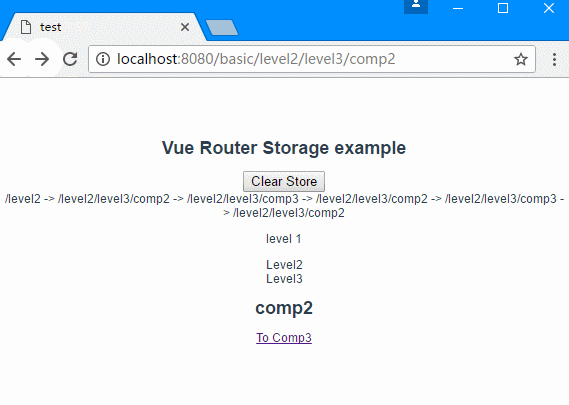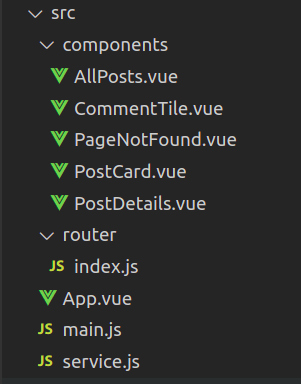

- Vue router to external url how to#
- Vue router to external url install#
- Vue router to external url code#
Next, change directories on the terminal to move into the src directory: cd src
Vue router to external url code#
Views are the pages that will be shown to users when they visit our website or application.įirst, let’s open the project in your preferred code editor. You can visit the application running on Creating our viewsīefore we proceed to the meat of our project, we have to work on our views. Then, start the project like so: yarn serve Now, change directory to the project folder with the following command: cd breweries-app
Vue router to external url how to#
But that wouldn’t be much fun, would it?įor the sake of this tutorial we’ll learn how to manually set up and configure Vue Router ourselves.
Vue router to external url install#
With the Vue CLI we can install the Vue Router package and let it set up automatically by choosing the Manually select features option, then choosing Vue Router as part of our project’s configuration. Select Default (Vue 3) ( babel, eslint) get set up quickly. Open up the terminal and type in the following command to create a new Vue project: vue create breweries-app

This tool allows us not to worry about configurations when we start using our app, because we can manually select the required packages. We will be using the Vue CLI tool to bootstrap a new Vue project. You can install the Vue CLI with the following command: yarn global add OR Working knowledge of JavaScript and Vue is strongly recommended. This tutorial assumes that the reader has the following installed on their machine: Keep in mind we’re going to be using both the most recent versions of Vue Router and Vue in our application. We’ll be pulling data from the Open Brewery DB API. The demo is an application that shows information concerning breweries: their location, type, and website. In this tutorial, we’re going to take a look at how to implement routing in a Vue app using Vue Router by building a mini demo application. If your web application or website is built with Vue and contains multiple pages that users need to switch between, you definitely need Vue Router. In Vue, routing is handled using the Vue Router package. In the modern age of JavaScript frameworks, routing on the web works a bit differently you could say it’s gotten easier to implement. In simpler terms, with a router, you determine what should happen when a user visits a certain page on your website. Routing in web development is a mechanism in which HTTP requests are routed to the code that handles them. It is worth mentioning that Vue Router navigation methods ( push, replace, go) work consistently no matter the kind of history option is passed when creating the router instance.Iniubong Obonguko Follow Frontend developer, Vue ninja, code enthusiast. Therefore, if you are already familiar with Browser History APIs, manipulating history will feel familiar when using Vue Router. You may have noticed that router.push, router.replace and router.go are counterparts of, and, and they do imitate the window.history APIs. go ( 3 ) // fails silently if there aren't that many records router. go ( - 1 ) // go forward by 3 records router. go ( 1 ) // go back by one record, the same as router.back() router. go ( 100 ) // go forward by one record, the same as router.forward() router. Js // go forward by one record, the same as router.forward() router. It's also possible to directly add a property replace: true to the routeLocation that is passed to router.push: It acts like router.push, the only difference is that it navigates without pushing a new history entry, as its name suggests - it replaces the current entry. We will talk more about that in Navigation Handling.

Router.push and all the other navigation methods return a Promise that allows us to wait till the navigation is finished and to know if it succeeded or failed. Since the prop to accepts the same kind of object as router.push, the exact same rules apply to both of them. For optional params, you can provide an empty string ( "") as the value to skip it. Any other type (like undefined, false, etc) will be automatically stringified. When specifying params, make sure to either provide a string or number (or an array of these for repeatable params). push ( '/users/eduardo' ) // object with path router.


 0 kommentar(er)
0 kommentar(er)
